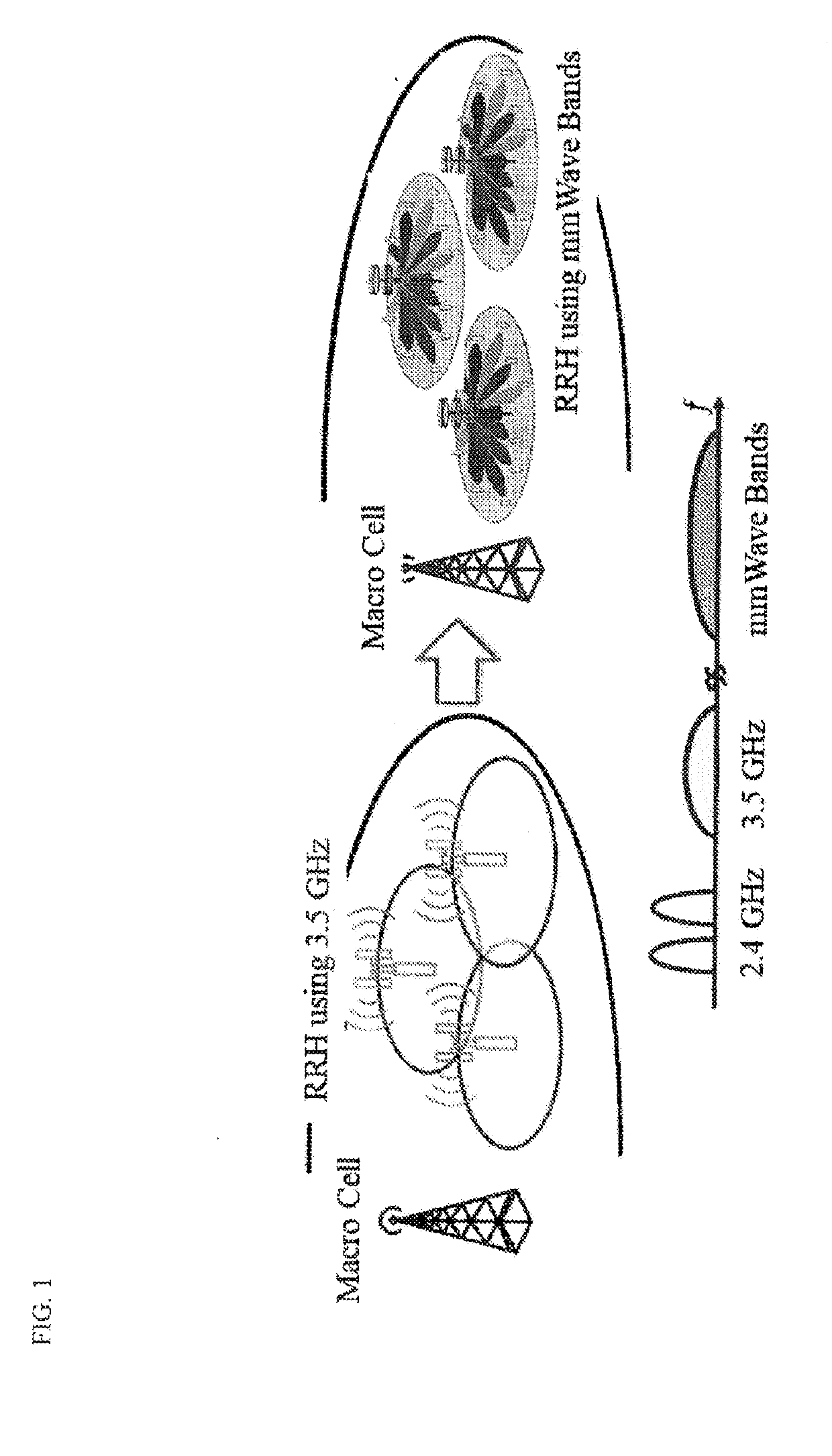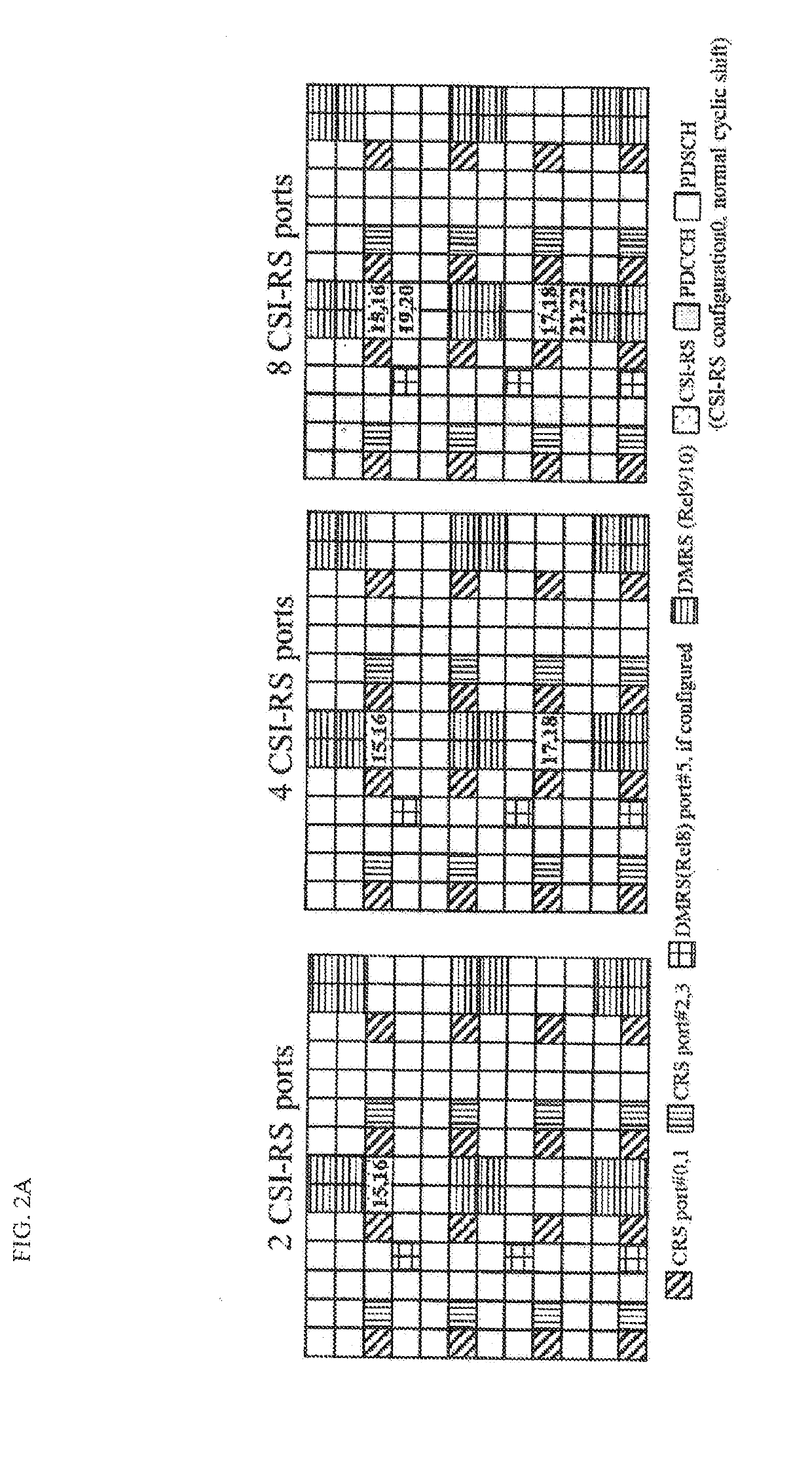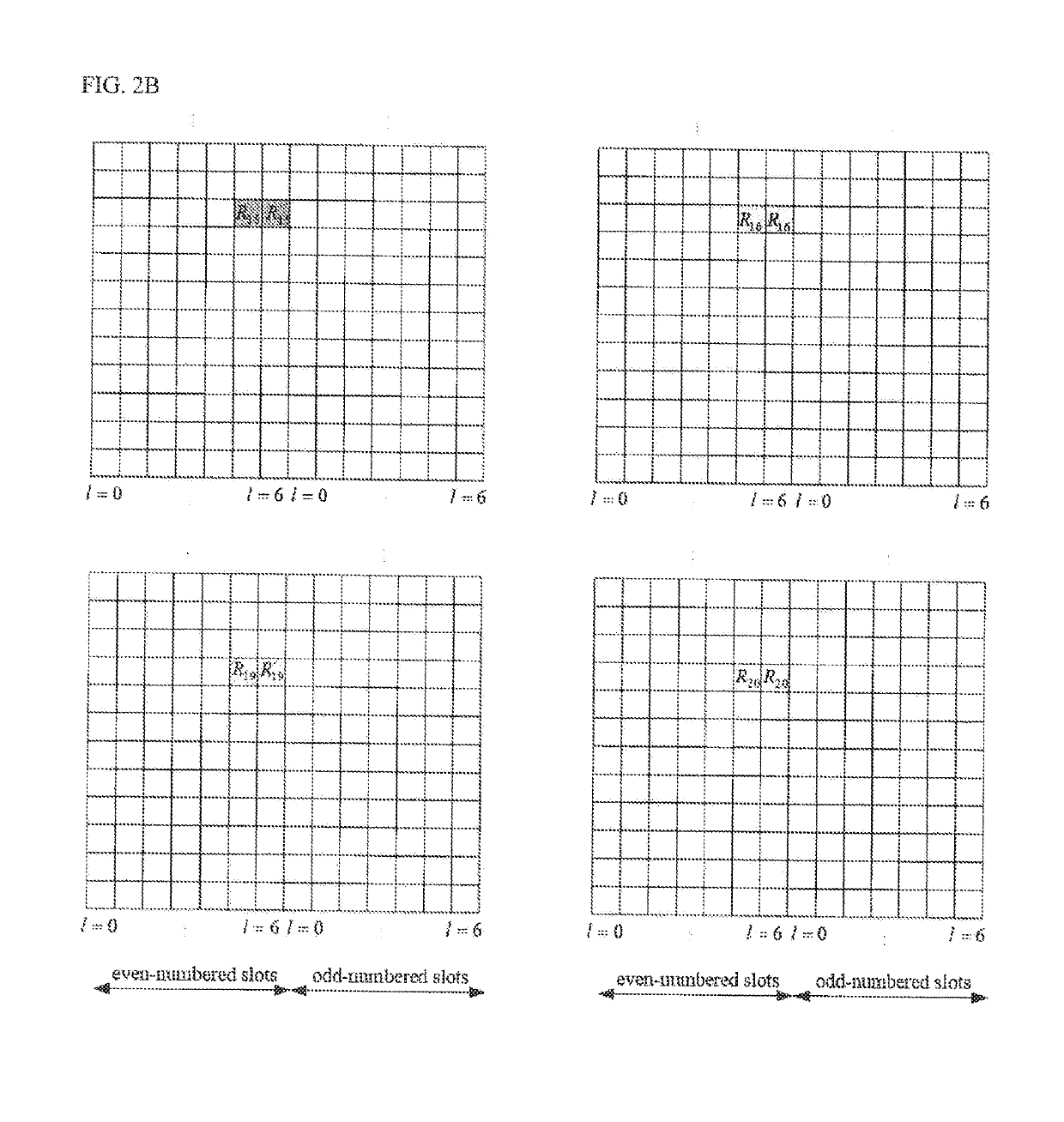Method of wireless communication and user equipment
a wireless communication and user equipment technology, applied in the direction of digital transmission, electrical equipment, transmission path sub-channel allocation, etc., can solve the problems of reducing the original coverage of each rrh in the lower frequency band, diffraction losses as well as penetration losses are higher, and the loss of free space propagation is higher. , to achieve the effect of improving the resource management efficiency of an evolved nodeb
- Summary
- Abstract
- Description
- Claims
- Application Information
AI Technical Summary
Benefits of technology
Problems solved by technology
Method used
Image
Examples
first example
[0080](Beam-Specific CSI-RS Pattern Configuration)
[0081]According to one or more embodiments of a first example of the present invention, the BS 20 may generate a CSI-RS that is quasi-orthogonally or non-orthogonally multiplexed on multiple resource elements (REs) and transmit the CSI-RS to the UE 10. For example, different transmission power may be applied to the multiple REs on which the CSI-RS is multiplexed. For example, the BS 20 may notify the UE 10 of transmission power information that indicates values (level) of the applied different transmission power.
[0082]In one or more embodiments of the present invention, the resource element (RE) is referered to as a resource unit (RU) or a resource. For example, the REs mapped to the CSI-RS may be indicated as a CSI-RS REs or a CSI-RS RUs.
[0083]One or more embodiments of a first example of the present invention introduce the beam-specific CSI-RS pattern with different power level setting on the CSI-RS RUs as shown in FIGS. 6A-6C. One...
second example
[0209](Beam-Specific CSI-RS Pattern Configuration)
[0210]According to one or more embodiments of a second example of the present invention, the BS 20 may generate a CSI-RS that is quasi-orthogonally or non-orthogonally multiplexed on multiple REs and transmit the CSI-RS tot the UE 10. For example, the BS 20 may scramble the multiple REs on which the CSI-RS is multiplexed with a predetermined scrambling sequence. For example, the BS 20 may notify the UE 10 of scrambling sequence information that indicates the predetermined scrambling sequence.
[0211]One or more embodiments of the second example of the present invention introduce the beam-specific CSI-RS pattern with different scrambling sequences. Assuming the basic CSI-RS sequence rl,n(m) is defined in Sect. 6.10.5.1 of TS36.211 as
rl,ns(m)=12(1-2·c(2m))+j12(1-2·c(2m+1)),m=0,1,…,NRBmax,DL-1
where ns is the slot number within a radio frame and l is the OFDM symbol number within the slot. The pseudo-random sequence c(i) is defined in Sect...
PUM
 Login to View More
Login to View More Abstract
Description
Claims
Application Information
 Login to View More
Login to View More - R&D
- Intellectual Property
- Life Sciences
- Materials
- Tech Scout
- Unparalleled Data Quality
- Higher Quality Content
- 60% Fewer Hallucinations
Browse by: Latest US Patents, China's latest patents, Technical Efficacy Thesaurus, Application Domain, Technology Topic, Popular Technical Reports.
© 2025 PatSnap. All rights reserved.Legal|Privacy policy|Modern Slavery Act Transparency Statement|Sitemap|About US| Contact US: help@patsnap.com



